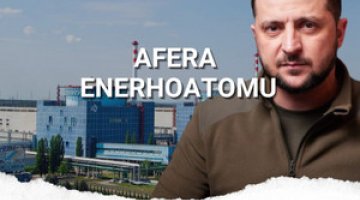The conflict in the Donbas – forced de-escalation?
Despite the anti-terrorist operation in eastern Ukraine, which has been ongoing for two months, Kyiv has lost control over much of the area, including the Donetsk and Lugansk regions and over 100 km of the border in the Lugansk region. The inefficiency of the Ukrainian actions and the constant inflow of military aid from Russia have led to a significant rise in the separatists’ potential. About 3000 Russian armed mercenaries have reached the Donbas, acting with the sanction of the authorities of the Russian Federation, which represents de facto military support from Russia. At the same time, all indications are that the Russian mercenaries have marginalised and taken control over the other local separatist groups. There has also been a significant decrease in the influence of Rinat Akhmetov, who has been forced to leave the region, and the separatists under his control have lost their earlier opportunities to influence the situation.
On 7 June, President Petro Poroshenko presented a peace plan for eastern Ukraine in his inaugural speech, calling for a dialogue with unarmed separatists, a general amnesty, decentralisation and early local elections. A day later, he announced the suspension of the anti-terrorist operations. The declarations made by Poroshenko, who by virtue of his office is commander-in-chief, and controls the Ministry of Defence and the National Security Council and Defence, signify that he hopes to resolve the conflict through negotiations with Russia. However, given that the new president of Ukraine has categorically rejected the key terms and conditions set by Moscow (federalisation of the state and granting autonomy to the Donbas), the prospects for compromise are unlikely.
The aims and course of the anti-terrorist operation in the Donbas
The anti-terrorist operation in the Donbas which has been in progress since 13 April was intended by the government to demonstrate its determination to fight against the separatist movement supported by Russia in the east of Ukraine; but the situation of the government forces has in fact worsened, as they have had to leave their positions in a number of cities, and the operation has also been ineffective as propaganda. In the initial phase of the operation, which lasted until mid-May, major clashes were conducted around Sloviansk and Kramatorsk, and Ukrainian forces blocked the transport route connecting eastern Ukraine with Crimea quite efficiently. However, the attempt to retake Mariupol from the separatists (7-9 May) ended in failure, as the National Guard and Ukrainian army formations were forced to retreat by the hostile local population. The conflict in the Donbas was escalated by a statement by the oligarch Rinat Akhmetov on 19 May, in which (after a long silence) he supported the authorities in Kyiv and tried to organise protests against the separatists. Akhmetov’s declaration disturbed the separatists, who feared that he would attempt to mobilise his employees in the region’s industrial plants and mines.
In response, the separatists carried out a series of offensive actions aimed at demonstrating their strength and determination. A symbol of this was the action near Volnovakha on 22 May, where the rebels broke up a sub-unit of the 55th Mechanised Brigade, killing 18 soldiers and wounding 32, representing the Ukrainian Armed Forces’ most serious losses in their 23-year history. The separatists also intensified their actions in towns located at the intersections of major transport routes; air traffic was paralysed, and rail transit partially so.
At the beginning of June the separatists targeted the border guard posts near the border with Russia. Government forces launched an attack lasting several days, but in the end they abandoned most of the border posts in the eastern part of the Lugansk region, in order to avoid further losses, and also because they had not received any support. This resulted in the separatists receiving further support from Russian territory; mercenaries trained in the Russian Federation (often originating in the Russian North Caucasus) became the most effective element of the separatist forces. Their number is difficult to specify, but it seems that about 3000 armed and professionally trained mercenaries have arrived in the Donbas.
An attempt to assess the anti-terror operation
The government forces’ actions rapidly revealed how unprepared the soldiers of the Armed Forces and the officers of the Interior Ministry of Ukraine were to conduct irregular combat with a diffuse and highly mobile opponent. The main proof of this is the losses of both personnel and equipment (according to the Ukrainian Health Ministry, in the Donetsk region alone 220 people have been killed since the beginning of the conflict), which indicate basic errors in military art (especially in the field of intelligence and reconnaissance), as well as deficiencies in the training and the low morale of the troops, who have proved unwilling to engage in any fighting and susceptible to pressure from local residents. Another factor limiting the effectiveness of the Ukrainian forces was the apparent lack of combat coordination, not only between the services subject to different departments, but also within a single structure (for example, between the aviation and land units, as well as between the regular and voluntary formations of the National Guard, which is subordinate to the Interior Ministry).
The operation was not carried out in a comprehensive manner; the Ukrainian forces only operated in certain selected locations, allowing the separatists to conduct active operations in other areas at the same time. Despite the gradual influx of new sub-units and the wider use of air activities (conducting mock attacks against ground targets), the resistance of the separatists has not been weakened. However, another important factor determining the failure of the operation was the revaluation of psychological pressure on the mood of the civilian population which resulted from the use of force. Kyiv has not conducted any media or propaganda campaign among the residents, for whom the Russian media have been the main source of information. They have created a false image of pacification operations by the Ukrainian army in Donetsk, alleging that large losses have been sustained among the civilian population. Russian propaganda further argues that large numbers of refugees have entered the Rostov region. The exact number of people in the region who have decided to leave is not known (probably up to 3000 persons), but this migration has not become any larger, and is also principally economic in nature.
Russian mercenaries take control of the region
The large-scale influx of mercenaries and military equipment from Russia has led to conflicts between the separatists, who from the beginning have not formed a homogeneous group; this has resulted in a shift in power. Although the divisions among them were never fully clear, there are indications that the local separatist groups have been marginalised, including the group controlled by Akhmetov. The oligarch started to come into increasing conflict with the Russian-backed separatists, who have called for more decisive action. As a result, the situation went out of Akhmetov’s control, and – after failed attempts to mobilise the employees of his companies – he was forced to go to Kyiv.
The situation in most of the Donbas is now under the control of Russian mercenaries, and by extension Russia. The increased brutalisation of the separatists’ activities has led to many local social activists and politicians loyal to Kyiv fleeing the region. The local people’s sentiments are not fully clear, but we may suspect that predominant among them are fear, and at the same time an unwillingness to take an active stance. Although a large part of the population does not support the actions of Kyiv, this does not translate into automatic support for the separatists (the meetings organised by them attract only a few hundred people). If the socio-economic situation in the region deteriorates, however, a significant increase in public dissatisfaction is possible.
Conclusions and prospects
After two months, the ongoing anti-terrorist operation has not brought about a breakthrough in the situation in eastern Ukraine. Government forces have not extended the area under their control, the separatists have maintained their freedom to act and strengthened the positions they occupy, mainly due to the influx of armed mercenaries from Russia.
Faced with the choice of either continuing the inefficient armed attacks which risk further losses, or beginning a search for peaceful solutions, President Poroshenko has decided to gradually run down the anti-terrorist operations. This choice was also influenced by his desire to demonstrate his good will and peaceful intentions on the domestic and international stages, for propaganda purposes. This was also the goal of the trilateral talks started on 8 June at Poroshenko’s initiative, between Ukraine, the envoy of the OSCE and the Russian ambassador in Kyiv. At the same time, it will be hard to boost the Ukrainian military action, due to the progressive fatigue of the forces engaged, which would result in dereliction of duty and attempts (also in the west of the country) to block Ukrainian troops from leaving to the Donbas. Moreover, any attempt to displace the separatists would entail the start of fighting in the cities, which would entail heavy losses among the civilian population and de facto war with Russia in Donbas, as Russian mercenaries are the foundation of the separatists’ forces.
President Poroshenko’s peace offer of a cease-fire, the start of negotiations and the proposed withdrawal of mercenaries back to the territory of Russia has not met with a positive response from the Kremlin. The clashes, although not very intense, are still continuing, which means that Moscow will not give up supporting the separatist forces. Given that the authorities in Kyiv have rejected the possibility of accepting the current Russian conditions, and Moscow’s determination to achieve its goals in Ukraine, we should anticipate a continuation of the conflict in eastern Ukraine and an increase in the separatists’ influence in the Donbas.





